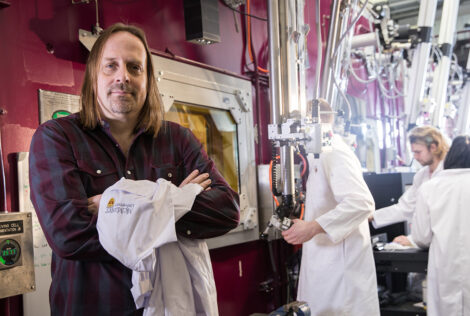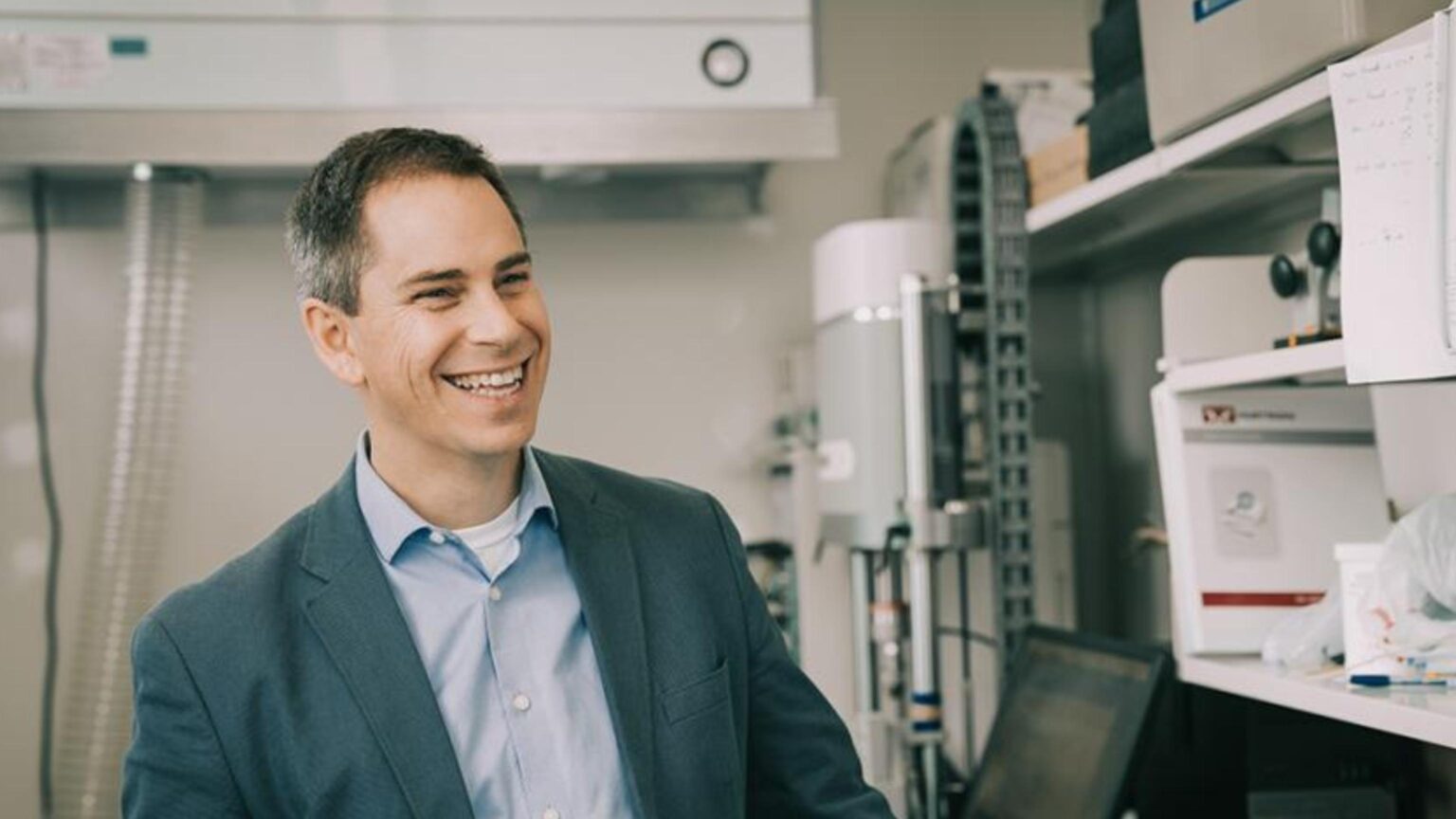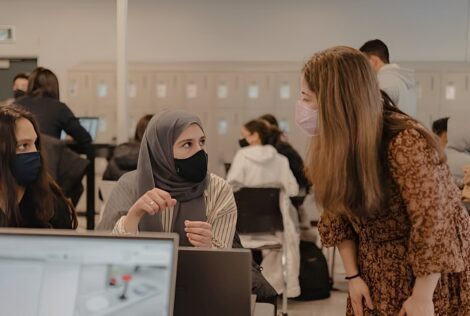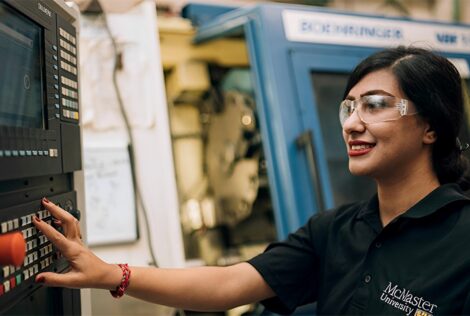

As they explore the cutting-edge of materials, microscopy and biomedical engineering, McMaster researchers are making discoveries that promise to keep Canadian troops safer and healthier in years to come.
Nabil Bassim, associate professor, Materials Science & Engineering
An electron and ion microscopist who studies the molecular and atomic structures of various materials, Nabil Bassim is looking for a way to make tanks disappear.
Not literally disappear, of course. Rather, Bassim is researching new materials that can hide the thermal signature of an object from heat-seeking infrared cameras often used to search out troops and equipment.
“There are certain materials that can fool those infrared cameras and help make an object appear colder than it is,” he explains. “We’re trying to make a warm body or a warm vehicle blend into the background, so it’s not an easy thing for those cameras to pick up.”
Prior to arriving at McMaster, Bassim worked with the US Naval Research Lab as a staff research scientist for about 15 years after completing his graduate studies. He has helped the Faculty of Engineering establish a committee to encourage research relationships with the Canadian military.
“We are trying to make sure that when new military research and procurement happens, McMaster, with all of its expertise, is at the table to see about research opportunities for faculty.”
Re-engineering the micro-structure of materials may also offer a route to increasing the resiliency of the armour used by military troops and vehicles, says Bassim.
He also has funding from the American military to study high speed switches and ultra-hard ceramics.
Natalia Nikolova, professor, Electrical & Computer Engineering
There are few circumstances when military personnel are more vulnerable than at a checkpoint.
But Natalia Nikolova’s research into cognitive radar for concealed weapon detection aims to change that.
She has already developed an unobtrusive surveillance system that combines microwave radar and machine learning to detect hidden weapons being carried by people. In the process of commercial development, the system will identify people carrying hidden guns and knives in high schools, malls and other public places – “anywhere where you want people to be moving freely and surveillance to be discreet,” says Nikolova.
With a grant from NATO, Nikolova is now working with a partner in Ukraine to broaden the technology into a military protection tool for the detection of concealed explosives and explosive vests.
“The technical challenge here is to expand the range of the system to at least 10 metres,” she notes, so hidden explosives can be identified before they are dangerously close to military personnel.
The small system allows for portable or wearable use, and the aim is to provide military, police and security professionals with an early-warning system to help protect them as they deal with unknown or potentially armed people.
Gregory Wohl, associate professor, Mechanical Engineering
Military personnel are expensive and valuable assets. But they are also human beings subject to injuries that can slow them down or pull them off their duties.
Greg Wohl envisions his cellular research into bone stress fractures will help reduce both pain and suffering, and the downtime that troops experience when repeated activity under load – such as marching with a heavy pack – causes injury.
“We study how bone adapts to mechanical loading and part of that is how it responds to injury,” he explains.
While the human body regularly experiences and repairs micro-cracks in bones, some repeated activities can lead some people to develop longer cracks – known as stress fractures – that cause pain and require rest to heal.
Long-distance runners and military personnel are prone to these bone fractures in their feet and lower legs, while rowers can experience them in their ribs.
Better understanding of the cause of stress fractures and the mechanics of the body’s repair mechanisms may contribute to research into ways to reduce loading and improve equipment to prevent injury, says Wohl.


